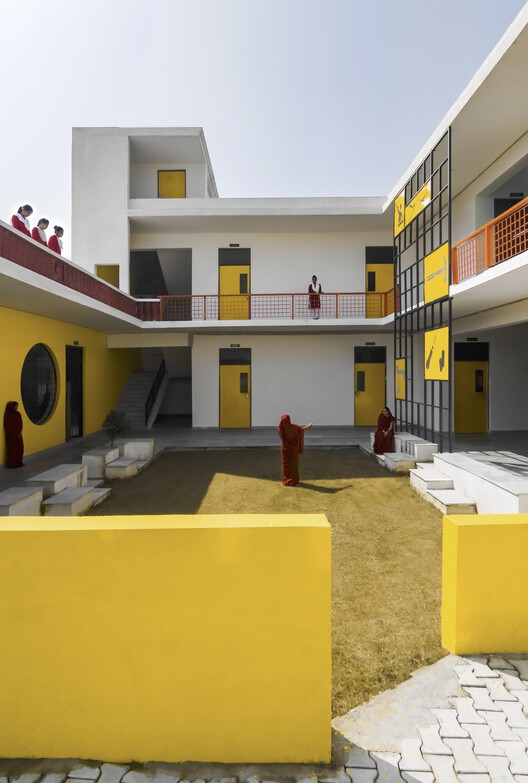

Text description provided by the architects. As part of the ODOP initiative, the district of Agra has been identified as a hub for producing leather and leather goods. In line with this, the Common Facilitation Centre (CFC) Agra has been developed to provide technical support and services specifically to the footwear industry in the region. The primary aim of CFC Agra is to improve the quality of footwear products produced in the region and enhance the industry’s competitiveness in both domestic and international markets.


To achieve this objective, the CFC Agra offers a range of services to footwear manufacturers in the region, including training, product development, testing and quality control, and marketing support. The Centre is equipped with state-of-the-art technology and machinery to provide these services to the industry. By providing technical support and services, the CFC Agra aims to help footwear manufacturers upgrade their skills and improve the quality of their products, thereby contributing to the growth and development of the industry.



The project goes beyond conventional building practices, as the future users of the space themselves assisted in the construction by laying the bricks. Such a participatory way of building helped foster a sense of ownership and pride among the users, promoting a deeper commitment to maintaining the facility and strengthening social cohesion. The core ideology of the design has been evolved by the concept of lacing of loops of threads for the weaving of leathers.



The concept involves transforming raw materials into finished products through the craft of idea interpretation and processing, which was incorporated in the building façade and fenestrations. The inspiration has been developed with the fluidity of the leather and its properties. The interweaving leather stitching technique creates intricate patterns resembling exposed brickwork on a modular façade. This design concept aims to evoke the genuine texture of leather and brick, offering both visual interest and functional benefits such as natural ventilation and shading for adjacent spaces.

The Common Facilitation Centre is divided into three zones: public, socially interactive, and private. The public zone features a large foyer with interactive nodes, while the social interactive zone includes a multifunctional courtyard and open exhibition spaces. The private zone houses workshops and an open terrace. The design integrates recreational, breakout, and interactive spaces, offering versatile uses such as craft displays, exhibitions, and community activities.


A bright color palette breaks traditional design norms. Achieving the desired façade involved intricate brick weaving, which was challenging due to the craftsmanship required with high-quality burnt clay bricks. Contextually and socially relevant, the design integrated glass windows behind the exposed brick jali façade, considering climate factors. The project provides a platform for artisans to learn, practice, and showcase their crafts, promoting social, economic, and communal growth. The initiative aims to create employment opportunities, preserve local skills, promote arts, cultivate industry cooperation, and restore artisan residences and workplaces.

Project gallery
Project location
Address:Agra, India

Location to be used only as a reference. It could indicate city/country but not exact address.
About this office

Cite: “Common Facilitation Center (CFC) / Node Urban Lab” 19 Aug 2024. ArchDaily. Accessed .
Did you know?
You’ll now receive updates based on what you follow! Personalize your stream and start following your favorite authors, offices and users.







